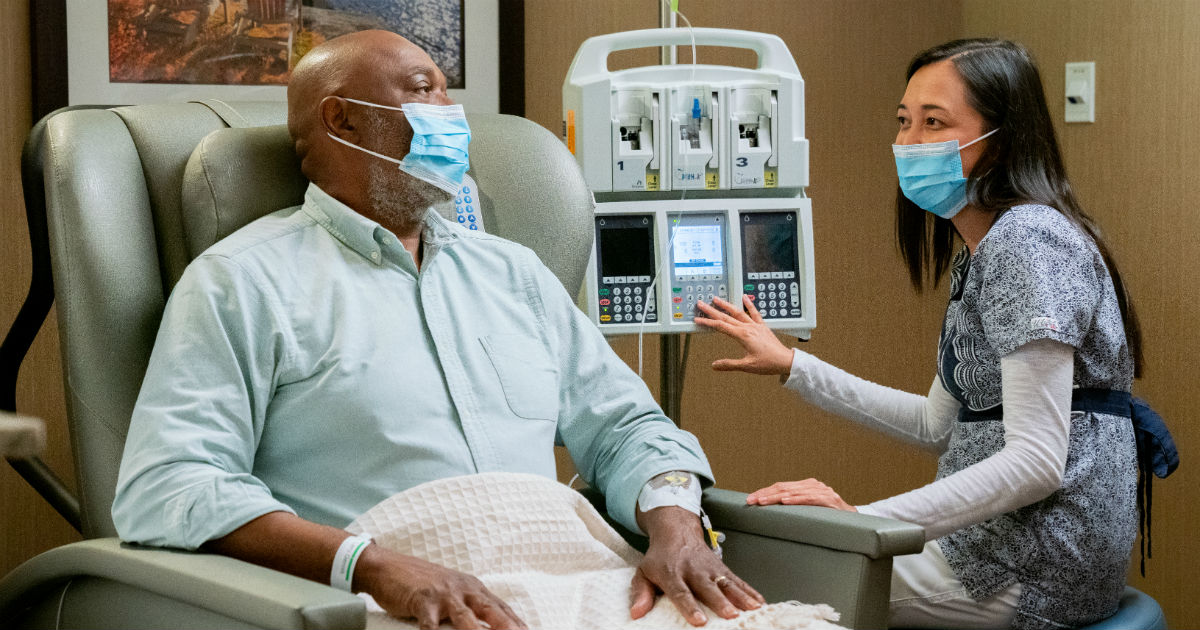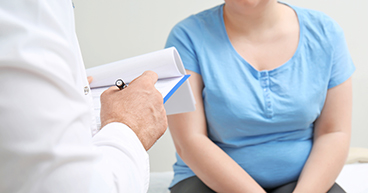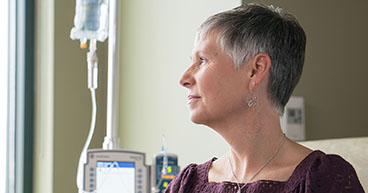
Since German chemist Paul Ehrlich coined the term “chemotherapy” in the early 1900s, this form of treatment has evolved into a standard of care for many diseases, including cancer. But as long as patients have been undergoing chemotherapy, side effects have been a concern, especially nausea and vomiting. Knowing what to expect from your chemotherapy treatment may help you prepare for the digestive issues that may follow.
How does chemotherapy work?
Chemotherapy drugs treat cancer by attacking fast-growing cancer cells in the body, or a specific part of the body. The type of chemotherapy drug, dosages and length of treatment regimen depend on the type of cancer, its stage and other factors. Chemotherapy is often given with other types of treatments, including surgery and radiation therapy.
While cancer cells are often fast-growing, so are cells in hair follicles, bone marrow and the digestive system. When chemotherapy kills those fast-growing cells, it may cause nausea and vomiting and other side effects, including:
Suppressed immunity: Bone marrow, the squishy material inside bones, produces young cells that develop into immune cells. When chemotherapy damages or kills bone marrow cells, it may also hamper their ability to produce healthy immune cells, which may lead to immune suppression.
Hair loss: Chemotherapy may damage cells in hair follicles, those tiny pieces of tissue under the skin from which hair grows. When cells in the follicles are damaged by chemotherapy, hair may fall out and/or fail to grow for a period of time during and after treatment.
Other side effects of chemotherapy may include:
- Mucositis, or mouth sores
- Memory loss, or difficulty concentrating
- Anemia
- Fatigue
- Constipation
- Neuropathy
- Fever
Learn how to cope with cancer-related hair loss.
Nausea and vomiting
Researchers estimate that up to 80 percent of cancer patients treated with chemotherapy experience chemotherapy-induced nausea and vomiting (CINV). Nausea is characterized by an unpleasant feeling in the back of the throat or a queasy feeling in the stomach, which may or may not be associated with vomiting. Certain other triggers, such as sights, smells, taste, motion, anxiety or pain, may also stimulate nausea and/or vomiting.
Not all chemotherapy patients experience nausea and/or vomiting. In fact, even if you’re receiving the same chemotherapy treatment as another patient, your anti-nausea regime will likely vary. Your doctor may prescribe a combination of medications, such as antiemetics, to help control nausea or stop vomiting before and/or after chemotherapy. Other methods, such as distraction, relaxation, guided imagery and acupuncture, may help control CINV.
Risk factors for nausea and vomiting during chemotherapy
Although it’s not always possible to know whether you’ll experience nausea and vomiting before starting chemotherapy treatment, research has identified certain risk factors that increase the chances of these chemotherapy side effects.
They include:
- Gender (more common in females)
- Higher doses of chemotherapy or chemotherapy treatments that are close together
- Age (more common in those younger than 50
- Long-term alcohol use
- History of morning sickness during pregnancy
- History of motion sickness
- Dehydration or electrolyte imbalances in the body
- Opioid use
- Constipation
- The tumor’s location (especially in the liver, gastrointestinal tract or brain)
- Infection in the body
- Uremia, which occurs when the kidneys aren’t functioning properly and toxins build up in the body
- Chemotherapy administered by an IV
However, your care team can give more detailed information about the risk of nausea and vomiting, based on the type of cancer and type of chemotherapy.
Tips for managing chemotherapy-induced nausea and vomiting
Before you start chemotherapy treatment, talk with your doctor about your risk of CINV and measures you can take to prevent and/or reduce CINV.
Here are some other ways to deal with CINV:
- During treatment, keep track of when nausea and/or vomiting occur—and the severity—and share this information with your doctor.
- Drink plenty of fluids, including water, unsweetened juice, ginger ale and sports drinks. You can also try sucking on ice chips. Avoid drinking a lot of liquids during mealtime, as it can make you feel full and bloated.
- Establish a pattern of eating meals and snacks at the same time each day. Ask your doctor about taking a nausea medication before meals. Avoid eating for one or two hours before a treatment.
- Instead of large meals, try to eat several small meals and snacks throughout the day. Take your time during meals, chewing slowly and thoroughly.
- Eat foods that are cool or at room temperature.
- Stay away from foods with a strong odor, such as onions, garlic while they are cooking. Avoid foods that are hot, greasy, fried, spicy, fatty or high in sugar. Avoid alcohol and tobacco.
- Eat soft, bland, easy-to-digest foods (e.g., plain crackers, toast, dry cereals, plain yogurt, chicken noodle soup, cottage cheese, pudding, sherbet, gelatin). Choose nutritious, high-protein snacks (e.g., peanut butter and crackers, cheese and crackers).
- If you can’t eat solid foods, try liquid or powdered meal replacements and shakes.
- Rinse your mouth often to keep it clean and to remove bad tastes or odors. Suck on sugar-free mints to get rid of a bad taste in your mouth. If foods have a metallic taste, try eating with plastic forks/spoons.
- Eat in a seated or upright position. If you need to rest after you eat, don’t lie down. Sit up or recline with your head raised for at least one to two hours after a meal.
- Eat in a quiet, relaxed setting and wear loose-fitting clothes. Avoid eating in a stuffy room and get plenty of fresh air.
- Don't force yourself to eat. Eat what appeals to you whenever you can.
- If you feel nauseated in the morning, try snacking on crackers or toast before you get out of bed.
- When nausea hits, breathe deeply and slowly, in through your nose and out through your mouth.
- During chemotherapy treatment, use simple distractions, such as listening to a relaxation tape or soft music, drawing, knitting, reading or doing crossword puzzles.
- Consider using a wristband or an ear patch that helps control nausea.
Learn how continued smoking may affect cancer treatments
Commonly asked questions about nausea and vomiting after chemotherapy and radiation therapy
Do chemotherapy pills make you sick or does only intravenous chemotherapy?
Yes, oral chemotherapy pills may also sometimes cause nausea and vomiting. However, because it takes longer for the body to absorb the pills compared to intravenous treatment, it may take longer before you start to feel sick.
How long does nausea last after chemotherapy?
Nausea and vomiting may begin within a few minutes to hours after treatment and may last up to 24 hours. This is known as acute nausea. Some patients may also experience delayed nausea, which usually starts at least 24 hours after treatment and can last for several days. Your care team can let you know whether the chemotherapy drug prescribed is likely to cause acute or delayed nausea.
Does radiation therapy cause nausea as well?
Patients may experience nausea after receiving radiation treatment. Nausea and vomiting after radiation therapy occur more frequently with higher doses of radiation or radiation to large areas of the body.
The risk of nausea also is higher for patients receiving radiation therapy to the brain, liver or gastrointestinal tract.
How long does nausea last after radiation therapy?
Nausea after radiation therapy usually goes away a few weeks after treatment has finished. It’s more common with external radiation therapy and radiation therapy that targets the stomach or abdominal area.



